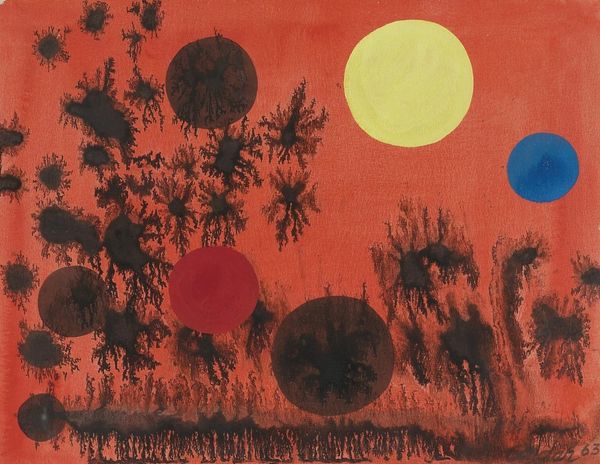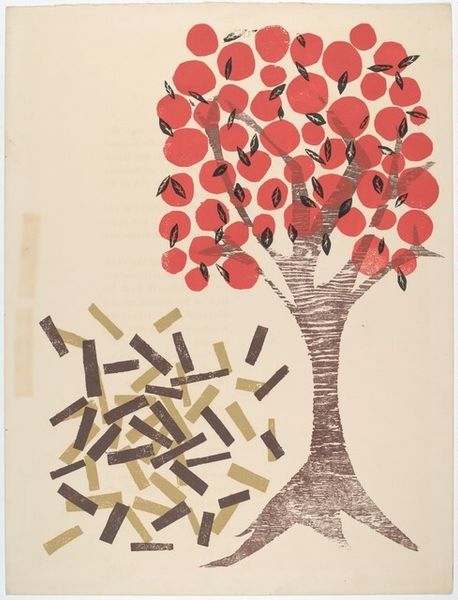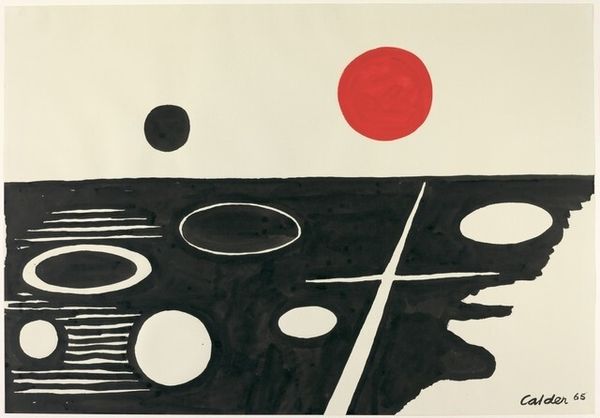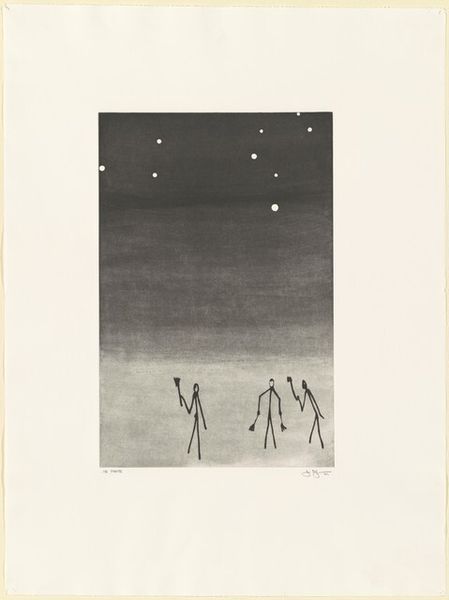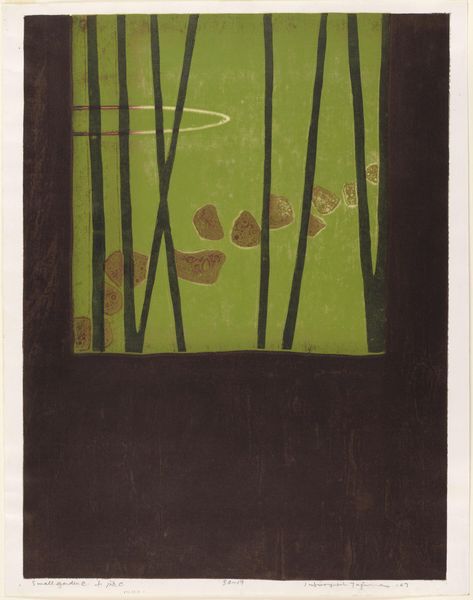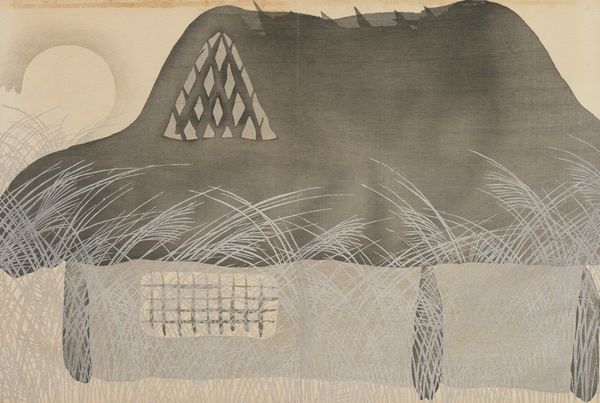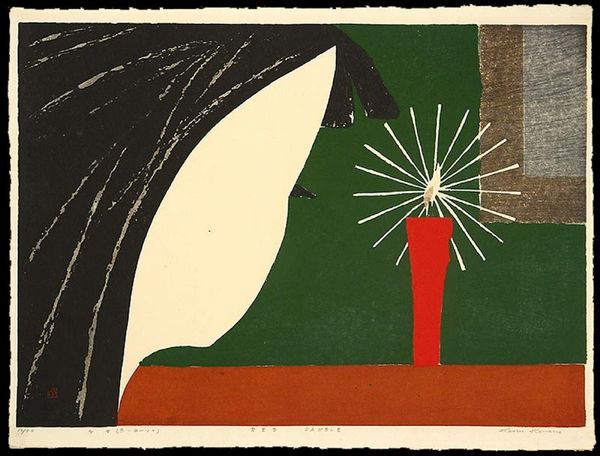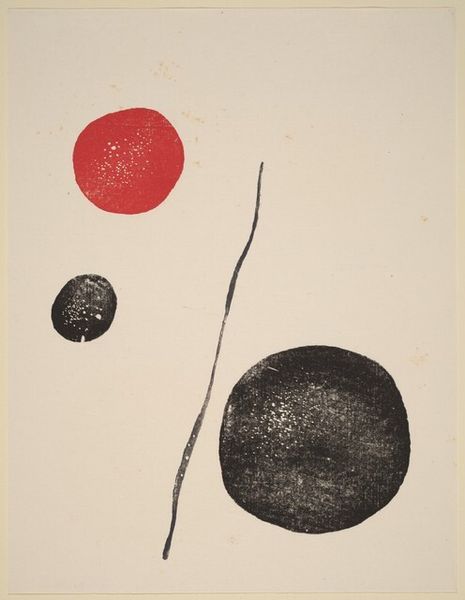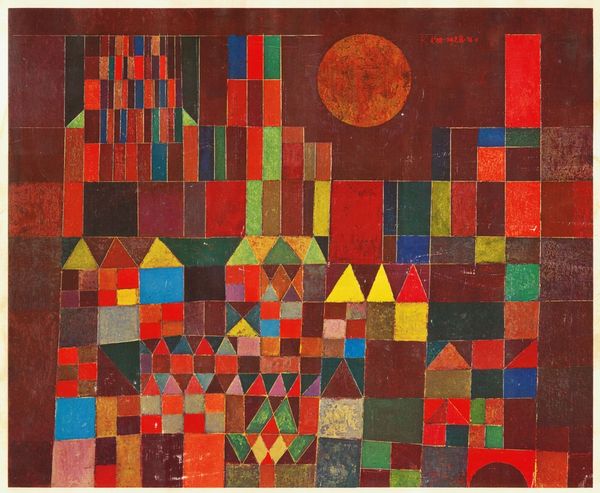
print, woodblock-print
#
stencil
# print
#
asian-art
#
landscape
#
pop art
#
woodblock-print
#
abstraction
#
line
#
post-impressionism
Copyright: Kiyoshi Saito,Fair Use
Editor: This arresting image is titled "Yuki, yuhi (Snow, sunset)" by Kiyoshi Saito, created as a woodblock print. The stark contrast and minimalist style are immediately striking. What symbolic weight do you think these abstracted forms carry? Curator: It evokes, for me, a kind of collective memory. The simplified shapes and stark palette—red, black, and white—tap into primal associations. Red often signifies vitality, energy, the setting sun, against the void of the black sky or forest, while white represents purity, stillness, or perhaps the snow suggested in the title. Doesn't this triad, used across many cultures, conjure emotions related to endings and beginnings, warmth and cold? Editor: I can see that. The repeated lines of the trees, though, feel a bit ominous, almost like a barrier. Curator: Consider the cultural context. Saito was working during a time of immense change in Japan. The stylized trees, so rooted and repetitive, could also represent resilience, a collective strength against an uncertain future. This echoes traditional Japanese art's focus on the harmony of nature but presents it in a modern, almost graphic way. Does that resonate? Editor: Yes, definitely. The blending of tradition and modernism makes it more compelling. So it's not just a simple landscape, but a meditation on cultural identity? Curator: Precisely. By using this vocabulary of universal and immediately accessible signs, Saito transcends the personal and invites reflection on shared human experiences and continuities. It’s less about the scene itself and more about what it signifies on a deeper level. Editor: I see the image in a whole new light now. Thank you for unpacking the layered symbolism! Curator: My pleasure! It's rewarding to reveal the enduring power of simple forms and shared visual languages.
Comments
No comments
Be the first to comment and join the conversation on the ultimate creative platform.
